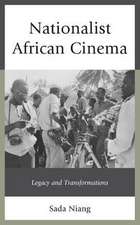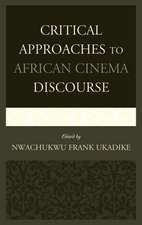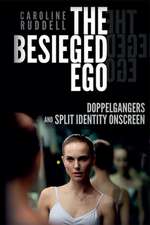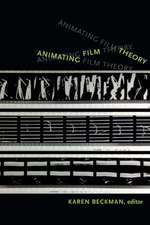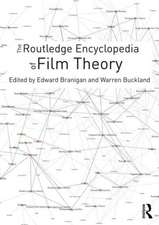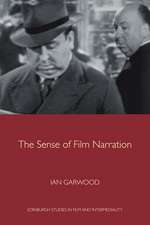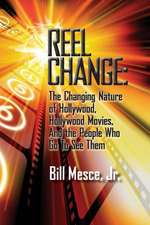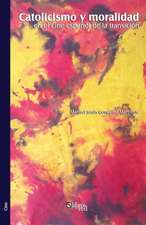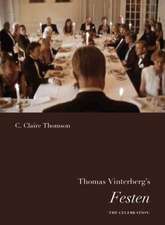Film Figures: An Organological Approach
Autor Warwick Mulesen Limba Engleză Hardback – 7 feb 2024
Preț: 496.64 lei
Preț vechi: 688.05 lei
-28% Nou
Puncte Express: 745
Preț estimativ în valută:
95.03€ • 103.64$ • 80.13£
95.03€ • 103.64$ • 80.13£
Carte tipărită la comandă
Livrare economică 25 aprilie-09 mai
Preluare comenzi: 021 569.72.76
Specificații
ISBN-13: 9781501361210
ISBN-10: 150136121X
Pagini: 200
Ilustrații: 25 bw illus
Dimensiuni: 152 x 229 mm
Greutate: 0.43 kg
Editura: Bloomsbury Publishing
Colecția Bloomsbury Academic
Locul publicării:New York, United States
ISBN-10: 150136121X
Pagini: 200
Ilustrații: 25 bw illus
Dimensiuni: 152 x 229 mm
Greutate: 0.43 kg
Editura: Bloomsbury Publishing
Colecția Bloomsbury Academic
Locul publicării:New York, United States
Caracteristici
Ties figural analysis in with key themes of contemporary philosophy in the schools of Zizek, Deleuze and Benjamin
Notă biografică
Warwick Mules is Adjunct Associate Professor at Southern Cross University, Australia. He is the author of With Nature: Nature Philosophy as Poetics through Schelling, Heidegger, Benjamin and Nancy (2014) and publishes in the philosophy of film and visual technology.
Cuprins
Introduction: Toward Negentropic Film Analysis1. Organology2. Duration3. Dreaming4. Anamnesis/Hypomnesis5. Cinematic Time6. EndgameConclusionBibliographyIndex
Recenzii
Warwick Mules' Film Figures advances a bold thesis: that, in its multi-layered depictions of people, stories and worlds, cinema is always feeling its way toward a future, imagining other outcomes, contesting the world's collective death-impulse. Exploring, in a new and original manner, a range of cinematic examples from Alfred Hitchcock and Orson Welles to Robert Bresson and Michelangelo Antonioni, Mules offers us not only an inspiring method of film analysis, but also an urgent rallying cry for planetary consciousness and renewal.
Warwick Mules engages in a serious and ambitious attempt to ask what is really going on when we watch a movie, via the work of several philosophers but above all Bernard Stiegler. The highly original "figural" approach pursued by Mules sees films as ways in which we feel our way towards the future, where doing so, in the incompletion if not the failure to cohere of the individual, the collective and the film itself, comes to be seen as the very thing that opens pathways towards telling a future otherwise. The spiralling backwards and forwards movements and leaps of time described by Mules are exemplified in brilliant readings of a diverse range of movies - from Rear Window, The Third Man and L'Eclisse to Beckett's Film, but especially the more recent The Father (by Florian Zeller) - leaving the reader with the feeling that, just perhaps, cinema has not yet exhausted its potential to reorient the disorientation that characterizes our contemporary inexistence.
Warwick Mules engages in a serious and ambitious attempt to ask what is really going on when we watch a movie, via the work of several philosophers but above all Bernard Stiegler. The highly original "figural" approach pursued by Mules sees films as ways in which we feel our way towards the future, where doing so, in the incompletion if not the failure to cohere of the individual, the collective and the film itself, comes to be seen as the very thing that opens pathways towards telling a future otherwise. The spiralling backwards and forwards movements and leaps of time described by Mules are exemplified in brilliant readings of a diverse range of movies - from Rear Window, The Third Man and L'Eclisse to Beckett's Film, but especially the more recent The Father (by Florian Zeller) - leaving the reader with the feeling that, just perhaps, cinema has not yet exhausted its potential to reorient the disorientation that characterizes our contemporary inexistence.






